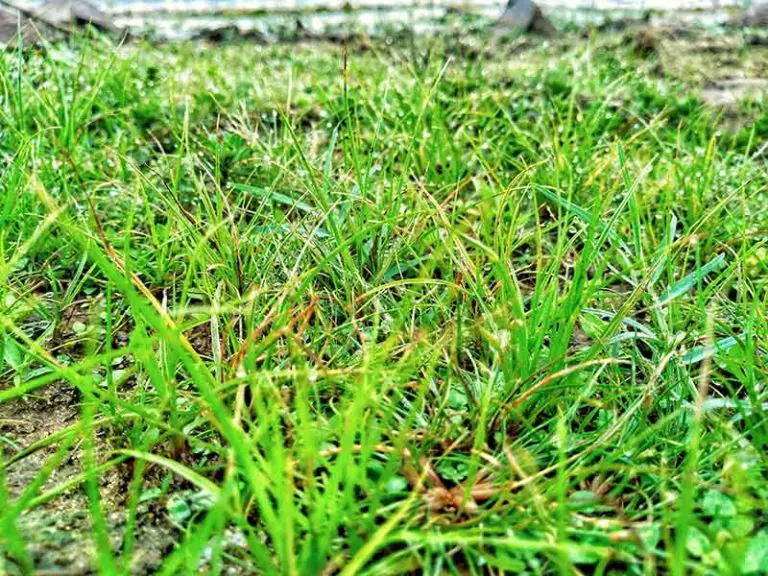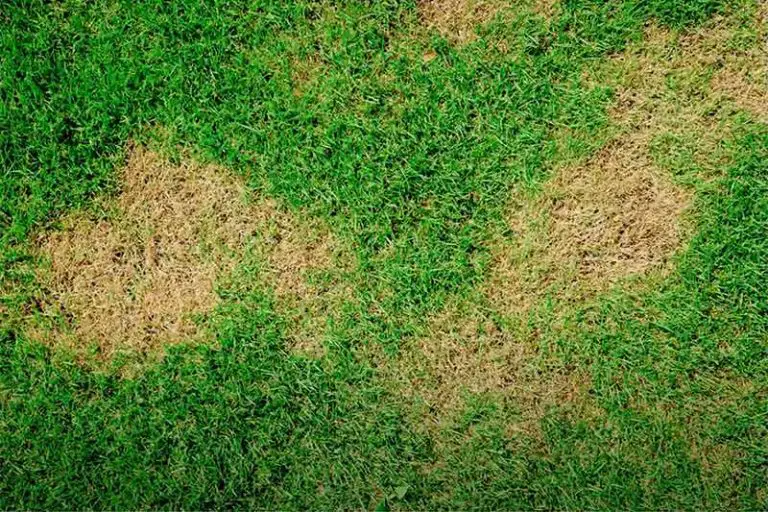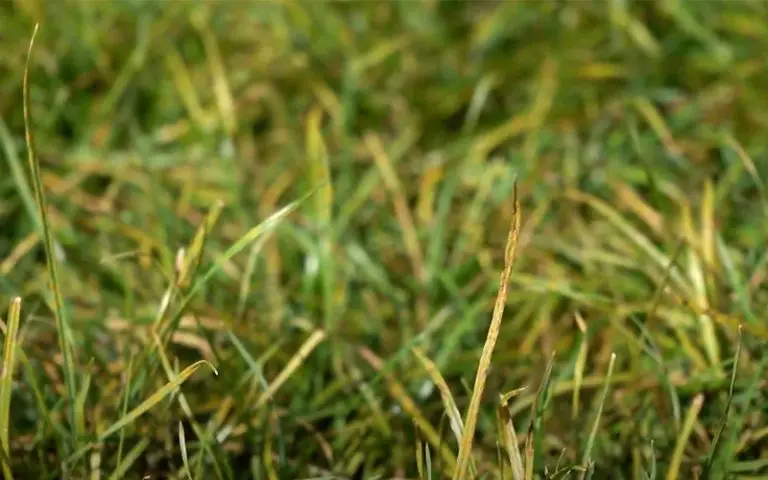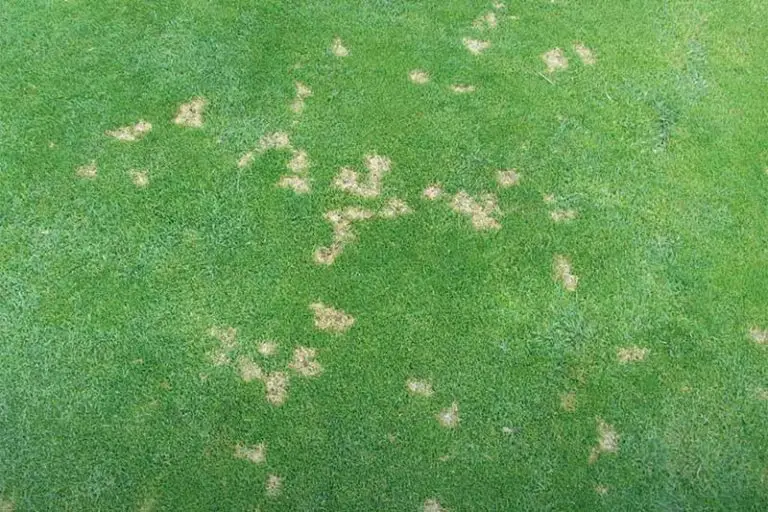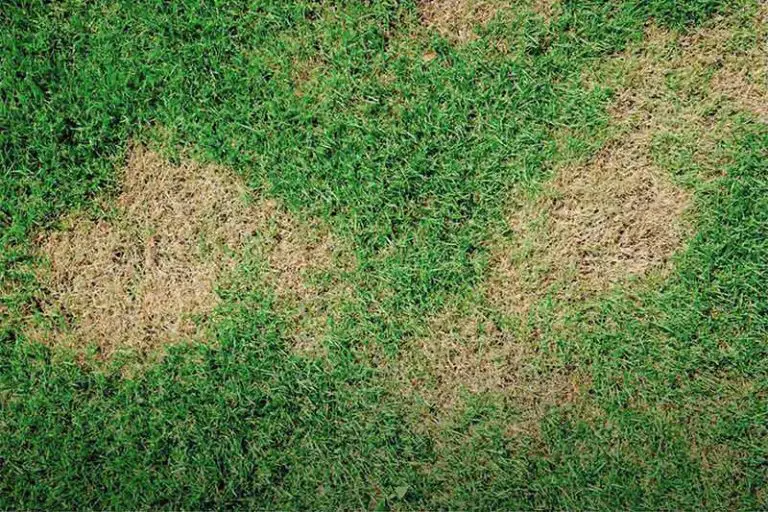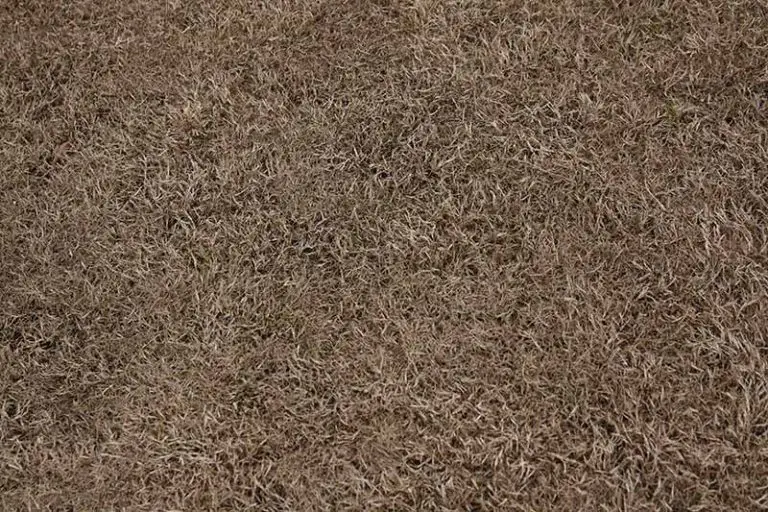Brown Patch Fungus: How to Get Rid of Brown Patch Fungus Lawn Disease
If you’ve noticed that the grass is turning yellow or brown in circular patches throughout your lawn, it’s likely that you’re dealing with an infestation of brown patch fungus. This fungus causes what’s known as brown patch lawn disease, and can destroy small to large areas of what would otherwise be healthy, green grass. It thrives when the weather is hot and humidity levels are high.
In order to get rid of brown patch fungus, you can apply a fungicide designed for brown patch control throughout your lawn. There are also several measures you can take to prevent the fungus from returning or spreading, such as limiting the use of nitrogen fertilizers, improving soil drainage, and improving air circulation.
Read through this guide to find out everything you need to know about brown patch control and prevention to get rid of brown patch fungus for good.
What Is Brown Patch Fungus?
Brown patch fungus, sometimes referred to as large patch disease, is a fungal lawn disease caused by a single species of fungus called the Rhizoctonia solani fungus. It’s a foliar disease, meaning that it damages the blades of grass but doesn’t affect the crown of the grass plant or its root system. Brown patch fungus often occurs during mid to late summer as it thrives in the heat and humidity of these seasons. While brown patch disease isn’t commonly seen on lawns in arid regions such as Southern California and the Mountain States, it affects lawns throughout the rest of the United States.
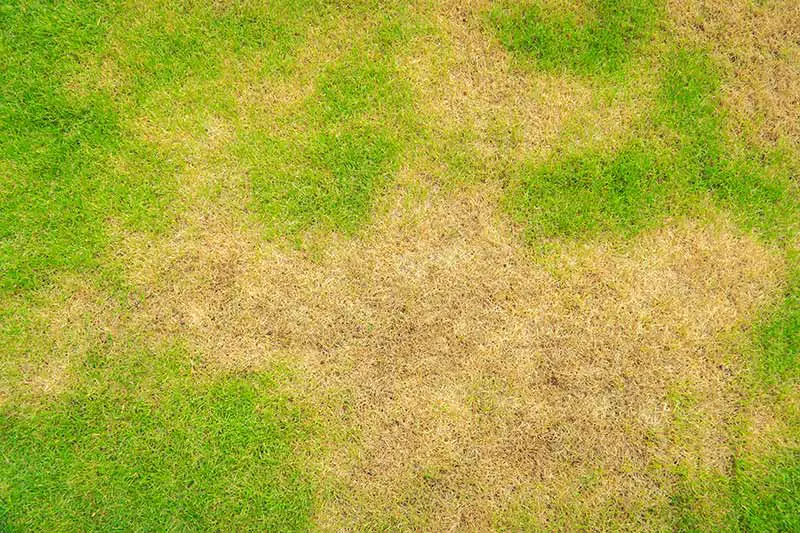
What Causes Brown Patch Fungus?
Brown patch fungus is most likely to thrive when the conditions are hot and humid. In order for the fungus to grow, the turf on your lawn needs to be wet for at least 10 to 12 hours straight. It can begin to develop when temperatures rise above 60°F, but it will spread rapidly when temperatures are between 70°F to 90°F.
The growth of brown patch fungus can be particularly severe in lawns that have been overfertilized with nitrogen, in addition to those that have inadequate levels of phosphorus and potassium. Other conditions that encourage the growth of brown patch fungus include having poor soil drainage, a lack of aeration, shaded areas of grass, cloudy weather, dew, excessive watering, and watering in the late afternoon; all of these conditions increase the moisture in the lawn and thus provide brown patch fungus with favorable growing conditions.
When Does Brown Patch Fungus Grow?
Depending on what type of grass you have, the area that you live in, and the recent weather conditions your area has seen, brown patch fungus can grow during the late spring, summer, or early fall.
On cool-season grasses, such as bluegrass, ryegrass, and fescue, brown patch fungus can develop during spring, summer, or fall; these grasses may also be affected by it during warmer periods throughout the winter months.
On warm-season grasses, such as zoysia grass, bermuda grass, centipede grass, and St. Augustine grass, brown patch fungus typically develops during the early spring and late fall.
Of all the grass types, tall fescue is the most susceptible to becoming damaged by brown patch fungus. Affected areas of this grass will be able to recover from brown patch disease, however, lawns less than a year old that contain tall fescue can be killed off completely by the fungus.
How to Identify Brown Patch Fungus on Lawn
If you have started to notice that patches of your lawn are yellowing or dying, take a closer look and inspect the shape and size of the affected areas of grass. Brown patch disease tends to manifest itself in patches of yellow or light brown grass that are roughly circular, if slightly irregular. The patches can range in size from a few inches up to several feet wide in diameter.
If the disease has been developing for a while, the affected areas can appear as patches of healthy grass that are encompassed by darker ‘smoke’ rings of thin or dead grass. Also, when the conditions are most favorable for the fungus to develop, large patches of grass can become thinned uniformly throughout the lawn without any evident circular shape at all. If humidity is high or the grass is particularly wet, small amounts of gray cotton-like growth known as mycelium may have developed among the affected areas.
On cool-season grasses, looking at the blades up close will reveal the leaf has small, irregular tan spots and dark brown borders if brown patch disease is present.
On warm-season grasses, the blades will rarely have spots, but instead the grass will have rotted leaf sheaths near the surface of the soil if brown patch disease is present.
Unfortunately, by the time you can spot brown patch fungus on your lawn, it means that the damage has already been done to your grass and the fungus is thriving. You should take the necessary control and preventative measures outlined in the following sections as soon as you notice the signs of brown patch disease on your lawn.
How to Get Rid of Brown Patch Fungus on Lawn
Avoid Excessive Moisture on Grass
Prolonged periods of excessive moisture on the grass leaves are the biggest contributors to the development of brown patch disease. Excessive moisture on the grass can be caused by a number of reasons, including overwatering, dew, or guttation, which is a term referring to the water that is exuded during the night by the grass blades. To reduce the amount of water you add to your lawn, avoid watering daily, and instead base your watering schedule on the current weather conditions and the ad-hoc water requirements of the grass and soil. Also, the time of day that you water the lawn will have an effect on brown patch fungus growth; watering early in the morning before sunrise enables you to remove large droplets of dew and water from the grass blades, thus speeding up the drying of the foliage once the sun has risen. Try not to water after sunrise or during the late afternoon to evening, as this increases the amount of time that the lawn is wet.
Limit Nitrogen Applications
Excessive applications of nitrogen-rich fertilizer can make your lawn more susceptible to brown patch disease. Fertilizers rich in nitrogen cause the lush growth of your grass, which in turn creates a more favorable environment for the fungus to spread quickly. For cool-season grass types, avoid heavy applications of nitrogen-rich fertilizer in the late spring and throughout summer. For warm-season grass types, avoid using nitrogen-rich fertilizer during mid to late fall. Never use any nitrogen-rich fertilizers that are also described as ‘fast-release’.
Landscape Properly
The growth of brown patch fungus can be controlled through the landscape of the lawn area. Lawns that are surrounded by trees, shrubs, buildings, and other obstructions will suffer from a reduced flow of air and lower levels of sunlight, meaning that the turf stays wetter for longer periods of time. Pruning trees and shrubs, or removing them completely along with any other barriers to the airflow in your lawn will help to minimize the amount of time the lawn remains wet, thus minimizing the risk of brown patch development. If you have any shady areas in your lawn, seed them with species of grass that are tolerant to low light levels, such as chewings fescue, hard fescue, or strong creeping red fescue.
Improve Soil Drainage
Brown patch fungus will start to grow when the lawn has remained wet for 10 to 12 hours straight. Improving the drainage of your soil reduces the amount of time that water sits on the surface of the turf, thus negating the favorable conditions needed for the growth of the fungus. In most cases, poor soil drainage is caused by having soil that is clay-heavy or compacted and can be remedied by amending the soil. In more serious cases where there is a significant amount of standing water, you may have to regrade the yard entirely. An alternative method that has been used to improve soil drainage is to create a pond or rain garden in the yard.
Improve Soil Air Circulation
Improving the air circulation around your yard and soil will reduce humidity and reduce the time it takes for the turf to dry out, which further negates the conditions needed by brown patch fungus to spread. Air circulation can be improved by aerating the lawn and dethatching to reduce the thatch layer at the soil’s surface, as well as pruning back any large trees, shrubs, or other foliage that may be blocking the flow of air around your yard.
Mow Lawn Regularly
Regularly mowing the lawn to an appropriate height for the grass species will help to keep the blades strong and therefore keep brown patch fungus growth at bay. Do some research into the ideal height for your grass species – we have included a handy table listing ideal grass heights in our article How Often to Mow a Lawn. As a general rule, you should never mow the lawn shorter than 2½ inches, nor longer than 3½. Mowing the lawn too short can increase the severity of the growth of brown patch fungus, so make sure to never remove more than ⅓ of the plant at a time. As an additional note, try to avoid mowing the lawn when it’s wet, as there are a number of disadvantages to mowing wet grass.
Remove Grass Clippings
The fungus can be spread to other areas of the lawn if clippings of grass from the affected area are left sitting on the lawn and the weather is warm and moist. Make sure to remove any clippings leftover after mowing to prevent the disease from spreading this way. If you want to cut down on waste and repurpose those leftover clippings, read through our tips in our article What to Do With Grass Clippings.
Apply Preventative Fungicide
Fungicide can be applied to the lawn as a means of both curative and preventative control of the growth of brown patch fungus. You should start applying fungicide to your lawn in the late spring or early summer when the night temperatures are consistently higher than 60°F. Depending on the specific product you use, you should reapply the fungicide every 14 to 28 days. Stop applying fungicide when the nighttime low temperatures are forecast to be below 60°F for five days straight.
Test and Adjust Soil pH
It has been found that brown patch disease can be more severe in lawns that have soil with a pH level of less than 6.0. You can test your soil pH using a home testing kit or by sending a sample of soil off to a professional laboratory. The results of this test will tell you the soil’s pH level, in addition to the amounts of nutrients present in the soil. If your soil is less than 6.0, you will need to add a pH adjusting material to raise its pH, lime being the material most commonly used for this purpose. Also, make sure that your soil has a high level of potassium as indicated by the tested sample. Apply a potassium-rich fertilizer if necessary.
How to Treat Brown Patch Fungus on Lawn
1. Catching the Disease Early
The best way to stop the spread of brown patch fungus in your lawn is to follow the guidance in the previous section, as removing the conditions needed by the fungus to grow will force it back into dormancy. If you’ve just noticed that the fungus has started to grow, you can fight it back by raking and fluffing the grass in the affected area to speed up the drying process. Then, you should fertilize your lawn with an organic fertilizer to provide the grass with a healthy dose of nutrients to fight off disease. This Garden Care Organic Fertilizer from Milorganite can be used on your lawn all year round to keep your grass and plants strong and resistant.
2. Treating Large Affected Areas
In order to treat larger patches affected by brown patch fungus, you can apply a fungicide to your lawn. Look for products labeled for controlling brown patch disease, or a fungicide containing one of the following ingredients: azoxystrobin, azoxystrobin with propiconazole, pyraclostrobin with triticonazole, fluoxastrobin, propiconazole, triadimefon, or myclobutanil. Timings may vary, but in general, azoxystrobin and pyraclostrobin fungicides will control brown patch fungus for about 28 days, while the other fungicides listed will control the disease for 14 days. Follow the instructions for the method of application found on the label of your chosen fungicide. We recommend using the Scotts DiseaseEx Lawn Fungicide, as it starts to work within 24 hours to both prevent and control the spread of a number of lawn diseases, including Brown Patch Disease.
How to Repair Patches on Lawn Damaged by Brown Patch Fungus
After carrying out any necessary brown patch control measures, you can repair the areas of damaged grass by overseeding the lawn. Choosing the best grass seed that’s hardy to lawn disease at this stage will significantly help to reduce the chance of brown patch disease returning in the future. Following the guidance outlined in this article, as well as carefully following a proper watering and fertilization schedule will help the grass to recover and grow back even stronger than before.

